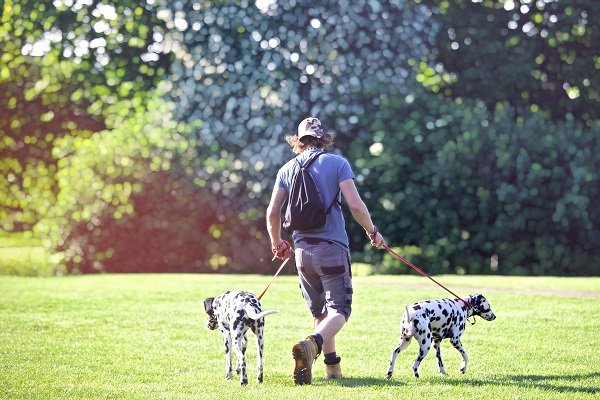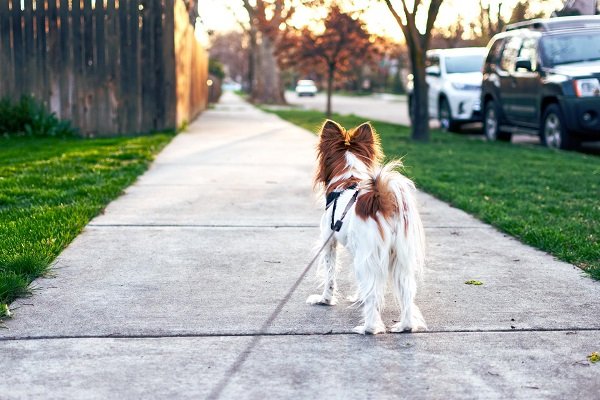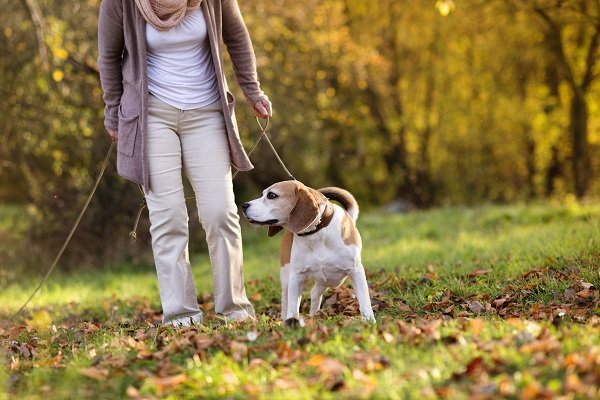The first reaction of a dog to seeing the leash, which is usually a telltale sign that they’re about to go on a walk, is instant excitement. And it’s because they love it!
Notwithstanding age or breed, every dog needs some form of physical activity to keep them healthy and mentally fit. Walking a pup is as important as dog grooming and feeding. The right nutrition or the right process of taking care of your pup is almost useless if your dog develops health issues, just because they don’t get exercise.
Dog walking is also a great way to bond with your pet. It helps them associate their favorite part of the day with you in it. However, most owners often wonder if they are doing the walks right or often enough.
This article will help you understand how often you should walk your dog, how long you should walk your dog, and other dog-walking considerations.
Why Is Walking Your Dog Important?

Taking your dog out goes beyond just exercise. It serves as therapy sometimes too, along with other benefits that include;
- Walking helps your dog stay fit
A dog that isn’t walked or doesn’t get exercise becomes lazy and puts on weight. It is never a good idea for your pet to become overweight. That is why taking your dog for a walk is important. It helps them burn off extra calories and keeps them light on their feet.
- Fresh air stimulates mentality
Studies have shown that dogs who get exercised regularly are less likely to develop an anxiety disorder or display destructive behavior. This is because walks engage your dog’s mind as well as their body by exposing them to new sounds, smells, noises, etc. It is also recommended as one of the activities that keep them happy and fulfilled.
- Staying outside helps your pup to socialize
Dogs are adventurous creatures and should be exposed to other people and animals, especially from a young age. A canine that fails to socialize early may grow too dependent on their owners and they usually end up with an anxiety disorder.
Walks help them meet people and teach them how to behave in social settings.
- Walks can also be used as training time
Amongst other fun activities, you can use the walk times to teach your dog tricks, how to follow your lead and how to respond to your calls. With a few treats, you can easily utilize the park or wherever you’re walking your dog as your pup training class.
- Walks help digestive and joint health
Sitting at home for long periods can do a number on your pet’s joints. That’s why keeping your dog in motion through walks will improve its joint function. One of the main reasons we take our pets on walks is because dogs prefer to ‘go’ or poop during walks. Doing so regularly also helps your dog prevent constipation and bacteria caused by urine sitting in the bladder for too long.
- Walks help owners get exercise too
A 15-30 minute walk may do wonders for your dog but it will also do wonders for you. It helps your blood circulation, weight, fitness, and overall health.
How Often Should You Walk Your Dog?

Studies show that at least 30 minutes to two hours of physical activity per day is beneficial for a dog. That means your pet should naturally be needing 3.5 to 14 hours of walking in a week.
You could choose to break that time into two or three walks per day for your pet, but the specific duration is different for each dog, depending on a couple of factors.
Also See:- How to Potty Train Your Dog
Those factors include:
- Dog age.
Older dogs will of course need less exercise than younger canines. This is because younger ones have more energy to burn off. Veteran dogs are also at risk of joint diseases like arthritis, atrophy, or other diseases like diabetes or hypothyroidism that can affect how much exercise their bodies can take.
- Dog breed.
Dogs are bred for different purposes. High energy working breeds like the Golden retrievers, Australian shepherds, Terriers, Labradors, and Border Collies will require longer exercise than those that are mostly for companionship and lead a less active life like Mastiffs.
Sometimes, regardless of breed, some dogs are naturally athletic and will require longer walks than those not.
- Health Conditions.
Dogs with health issues can’t walk for long without needing breaks. For such dogs, short walks of about 15 minutes should suffice. You could try increasing it as they get better.
- Exercise Tolerance.
While some dogs love to exercise and have the stamina to match their enthusiasm, some don’t. Forcing long walking hours on a pet that doesn’t have the stamina for it would put a strain on them resulting sometimes in health issues. That’s why it’s important to know your dog and figure out how much exercise his body can withstand then get to build your walk routine around that.
- Living Conditions.
Where you live with your dog also plays a huge role in determining how much physical activity they need to get outside daily. For example, a dog living in an apartment would need a longer walk period than a dog who lives in a house with a yard where they run around and play.
Your schedule as an owner also affects how often and how long your pet’s walk should last. For example, if you work a 9 to 5 job, he definitely would need a short walk in the morning and a longer one after work.
How Do You Know If Your Dog’s Walks Are Long/frequent Enough?

After taking the factors into consideration and you’re still uncertain if your dog is getting the right amount of exercise they need, you could watch out for a couple of signs that indicate that they are not getting as much physical activity as is necessary.
- Restlessness after walks
Dogs after releasing their pent-up energy outside behave calm and relaxed at home. If your dog doesn’t listen, appears to be restless, and constantly seeks your attention even after each walk, then it’s likely they aren’t satisfied with the duration of the outdoor exercise.
- Gaining weight
If your pooch is gaining weight despite the walks, then it could also be that they aren’t getting sufficient exercise.
In cases like this, it’s best to increase their exercise period gradually. You can choose to add around 10 minutes to each walk and observe your dog’s behavior again.
Conclusion of Dog Walking

It’s important to build a walking routine. It helps give your pup a structure by knowing what to expect. It also boosts confidence, especially in anxious dogs. Creating a routine for them with the daily walk helps you keep them happy and confident.
If you can’t walk your dog yourself because of your schedule or a pending disability, it is okay to use professional dog sitting or dog walking services. You can also consider hiring a trusted animal walker around you.
Some owners are reluctant to use a dog walker because they don’t want their pets to feel neglected.
It doesn’t mean you love your pet any less, but that you love them enough to put their health first regardless.
Also See: Importance Of Dog Tail Position Chart

